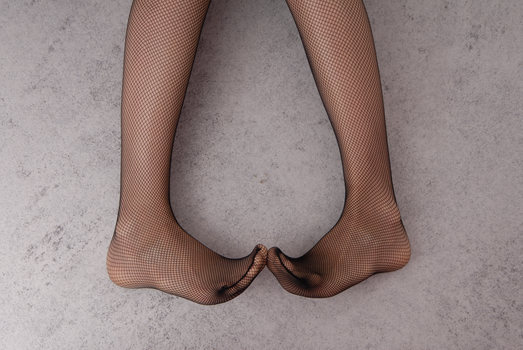Making a difference is about making small changes where you can. Pantyhose, stockings, or tights are probably not at the top of your list when it comes to making a difference in the world. They might not even feature in your list of plastic to stop using either. However, eco-friendly pantyhose exists and you can switch to them today.
I went out to dinner the other night and wore a pair of pantyhose as I typically do. It was only halfway through dinner before my $20 pair of pantyhose was ready to become landfill. I had put a small hole in the top which promptly laddered all the way down to below my knee. This is a story I know far too well.
So often pantyhose end up in the rubbish bin after only one wear. Not wearing pantyhose would be a good solution however I live in a climate where the weather can and does change regularly so it’s nice to wear them for warmth.
It would be good to find stockings that are well made and last more than one wear but imagine if those stockings were also made out of recycled material.
I have found a solution, Swedish Stockings.
Did you know – The original stockings were made from silk or rayon? Nowadays pantyhose are primarily made from nylon blended with elastane or spandex.
A Brief History of Pantyhose
Pantyhose, or tights, were invented in the late 1930s as a replacement for silk stockings by the American Company DuPont. The company Du Pont announced their invention of nylon stockings at the New York World Fair in 1939, Dubbed the “leg show” the exhibit was voted the “sexiest corporate show at the fair”. Although these were a big hit it wasn’t until the late 1950s that pantyhose with a waist and gusset came onto the market.
Nylon is a family of thermoplastic materials called polyamides that are made of synthetic polymers. It can be melted and molded into products or drawn into fibers for making fabrics. It’s found in many common items such as toothbrushes, carpets, umbrellas, rope, parachutes, clothing, fishing line, and tents. It is also used for some mechanical parts such as gears or machine screws found in clocks for example.
Pantyhose Today
The introduction of Nylon Stockings and pantyhose did not change the life expectancy of a pair of pantyhose. They are still an extremely weak item of clothing. I can definitely attest to this.
“Each year two billion pairs of tights or pantyhose are produced, worn once, and then discarded”, Swedish Stockings tells us. That’s a lot of plastic heading straight to landfill. You can of course up-cycle them yourself but there are only so many potpourri bags, filters, garden ties, or dusters you need.

Eco-Friendly Tights
As always, the first option is to reduce, not wearing pantyhose or tights is, of course, the best action you can take. However, if you must wear stockings then buy good quality lasting ones preferably that are already made out of recycled materials.
This is where Swedish Stocking’s step in. They are leading the way for a more sustainable hosiery industry.
Their mission is to produce stockings from sustainable materials while maintaining quality and sustainability in delivery. With the ultimate goal of recycling the very products they produce and therefore achieving a truly circular system. The technology is not quite there yet but Swedish Stockings are participating in research to find a solution. You can send your old stockings to them if you live in Sweden, the UK, or the US and get a 10% discount.
To produce their eco-friendly tights Swedish Stockings currently use post-production and post-consumer nylon waste. Their stockings contain 76% to 97% recycled material. The remaining percentage is made up of elastane to give the stockings their stretch. They also use renewable energy, are zero waste and use vegan dyes in their process.
So why not buy your pair of eco-friendly tights or pantyhose today and get started on your “buy recycled” adventure? We have provided our favorite examples below. I have been test-driving a pair or two for a few months now. I am loving them so much that I have just bought myself another 3 pairs.
Oh and don’t forget to read the stocking care instructions to ensure your pair of tights last as long as possible.

















